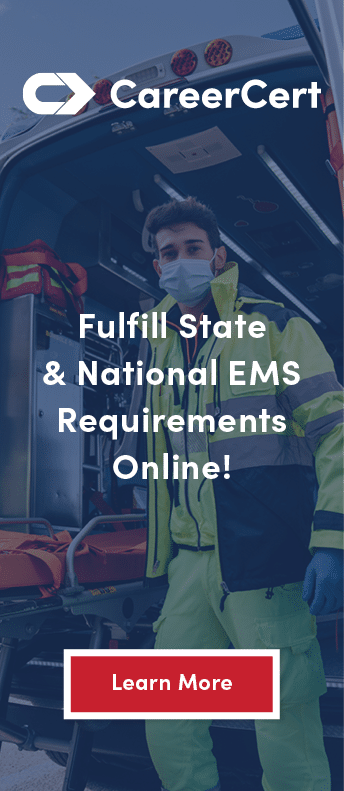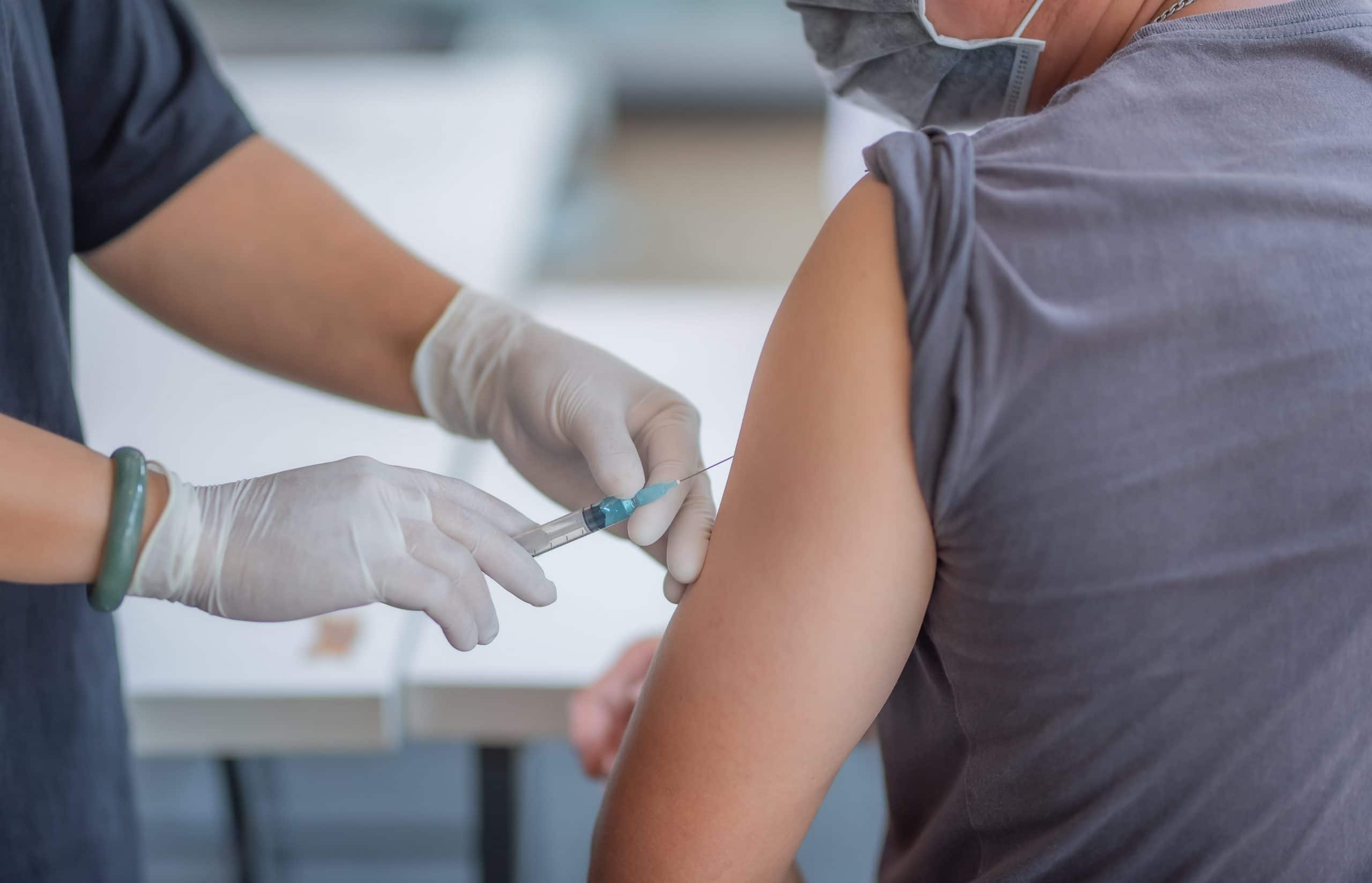Situational Awareness: Tips & Insights for First Responders
 It is a sunny Tuesday morning when your ambulance is dispatched for a male patient experiencing chest pain. You begin your response with lights and sirens and quickly catch up to the fire engine that was also dispatched. Both fire and your ambulance pull up on scene to an apartment building, where the patient is presumed to live. As you all step out to grab equipment, you suddenly hear gunshots and realize that you are being shot at in an ambush. All the responders scramble to find cover. You radio your dispatch and alert them to a medic in distress and you request police response. Police rapidly respond to your area and the shooter is taken into custody within several minutes of police arrival.
It is a sunny Tuesday morning when your ambulance is dispatched for a male patient experiencing chest pain. You begin your response with lights and sirens and quickly catch up to the fire engine that was also dispatched. Both fire and your ambulance pull up on scene to an apartment building, where the patient is presumed to live. As you all step out to grab equipment, you suddenly hear gunshots and realize that you are being shot at in an ambush. All the responders scramble to find cover. You radio your dispatch and alert them to a medic in distress and you request police response. Police rapidly respond to your area and the shooter is taken into custody within several minutes of police arrival.
Luckily, no first responders were injured in this event. Was there anything you could have done to prevent this scenario? Could you have done something to increase your safety during this ambush?
This experience is based on a call I responded to while working in Los Angeles County. Sadly, this is not my only experience with weapons being on scene. I have encountered multiple guns, knives, dogs, and other types of hazards like downed electrical lines and HAZMAT chemicals. Very few times were we given any dispatch information of the possible dangers or risks we would encounter once we were on scene. Being always prepared is the only way to lower your risk. Practicing different scenarios is key to successful implementation of scene safety.
Going Beyond the Basics
If you ask any emergency medical provider, “What is the first thing you learned as an EMT?” I bet they would respond, “Scene safe, BSI.” We all learned quickly that if we become a victim ourselves, we cannot help the patient and other first responders. Those risks could include a multitude of factors. It could be the altered mental status patient who becomes combative. It could be the loose dog. Maybe it is an emotionally charged family member who is not happy with how care is being delivered. As an emergency responder, you must always be aware of things that are in the environment and constantly analyzing the risks, while also providing high-quality patient care. This is not an easy task by any means. The mental stress can be overwhelming at times and the need to decompress is vitally important for your long-term mental and emotional wellbeing.
So, what is situational awareness and how does one prepare for the obstacles that stand in the way of delivering patient care? Situational awareness is the ability to see risks and dangers that are present on scene and the ability to mitigate those dangers.
At any given time, risks can appear. Understanding and knowing what to do takes practice and experience. The moment you start your shift is when you should begin to process information from your surroundings and interpret the level of threat.
Hierarchy & Steps of Situational Awareness
As an EMT or paramedic, I learned the hierarchy of situational awareness. First is my own safety. Second is my partner’s safety. Third is my patient, and last is any other bystanders that may be on scene and in potential danger. When I worked for a fire department, we had a motto, “2 in, 2 out.” We would never enter a scene by ourselves. There was always a buddy system. You were responsible for both you and your partner. This was the safest way to enter a dangerous situation. Somebody always knew your location in the event you became incapacitated.
According to Ron Duckworth, a firefighter captain, there are 6 steps to achieving situational awareness. They are:
- Perceive
- Process
- Predict
- Decide
- Take action
- Communicate
Perceiving the danger is the most important step. Without it, a first responder may become a victim themselves.
Let’s apply these 6 steps to our earlier scenario and see if there is anything we could have done differently.
My partner and I were called in for a patient with chest pain. We quickly began driving lights and sirens, and we soon were right behind the fire engine, also driving lights and sirens. As we approached the scene, we saw the address is for an apartment building on a busy 2-way street. We quickly parked and began to get out of our ambulance to grab our gear when shots rang out. We quickly realize that we were being ambushed. The gun fire is in our direction, but we do not know exactly where it is coming from. My partner and I, run behind the fire engine seeking cover.
The fire captain radioed his dispatcher that we needed police assistance. I was doing the same. I pressed my orange button on my radio that alerts our dispatcher medic in distress and quickly stated we were taking gun fire at our location. We were told, if possible, to leave the area. We risked exposing ourselves by attempting to access the driver’s seats, so we do our best to stay hidden until law enforcement provides us coverage. We were all lucky. We all left alive.
Was there anything we could have done to prevent this incident? We drove to the scene in normal fashion. Nothing stood out as ominous. A routine chest pain call hardly sounds like a dangerous scene to enter. Once we left the safety of our ambulance, was there anything we did not perceive? The man had called for chest pain and his apartment was on the 5th floor of the building. We had no way of seeing him from the distance of our vehicles. We heard gunfire. We knew it was close. Within a few shots we processed that they were meant for us. Out of instinct, we determined that the best place to run was the opposite side of the fire engine. We quickly took action. Lastly, we communicated. Not only with each other but with the rest of our departments. That is what brought us law enforcement. The man was quickly arrested, and we all walked away unharmed.
Situational Awareness Training
Now apply the same 6 steps to a more common risk. Let us say you and your partner are going to a call for a sick person. As you begin to walk up to the home, you notice a large dog is in the yard. You have perceived the dog prior to entering the yard. You look at his body language and you process it as calm and unaggressive. You predict that he will not bite if you enter that yard. You decide it is safe to enter. You continue forward, except right as you are about to open the gate, your partner grabs your arm and pulls you back while saying, “Wait.” He now sees the dog. He perceives him as a possible danger. He sees this large dog in the yard. His experiences reminds him of the last time he encountered a large dog. He nearly got bit and animal control was called before he could get closer to the patient. So, he is more cautious. He decides you should wait. His action was pulling your arm and he communicated by telling you to wait. Understand that how one perceives, processes, decides, predicts, reacts, and communicates will be based on previous experiences and knowledge. Other than actual experiences and a learning curve, training is a great way to safely gain experience and knowledge.
The problem is that many providers state they have had very little to no training on situational awareness. Sure, we all had training in our EMT and paramedic courses. Remember the good old standby, “Scene safe, BSI”? Students learn quickly that they must state this before every skills lab, and it is a critical failure on the National Registry psychomotor testing. The student could do every single step right but forget to utter those 3 words and the student fails.
Why is that? It is because, in real life, that is exactly what could happen. The scene not being safe could lead to further injury or even death. So how does one train and prepare?
First, learn what things to look for regarding scene safety.
For instance, windows and doors can put a first responder at risk. Remember the story about my crew being ambushed? The shooter was standing at his window. Understand that many times, a person can see out their window, but you cannot see in. The occupants have a clear view of you. They get to see everything, but you see a limited, if any, view. Doors pose a threat as well. Providers should always stand to the side, never straight in front of the door. Providers have been shot through doors.
Another important safety obstacle is how many people are on scene. Do you know where everyone is in the room? I warn trainees often about getting trapped inside a room with no exit and there being multiple people blocking your only exit. An irate family member can quickly turn into a dangerous situation. The first responder should do their best not to get in a situation where they have no clear exit. If one must flee a scene quickly like my partner and I in the ambush, a clear path is essential for a timely departure from the environment.
What room or environment one is standing in is also important. Kitchens have numerous weapons at hand. Obviously, there is the danger of knives and other sharp objects, but there are also things like small appliances, pots and pans that could be thrown or used as a weapon. Bedrooms also may have hidden weapons. There are many people who keep a loaded gun or knife near their bed. Many times, the weapon is kept in between the mattress or just behind the headboard. Maybe it is in the nightstand drawer. I have had multiple medical calls where a concealed weapon is in the room. Most times, simply asking politely if it can be moved or disarmed is all it takes to lower the danger of sudden attack. You may ask your partner to stand next to the weapon while you assess the patient. Keeping a close eye and never turning your back to the weapon in the room is very important.
Vehicles, just like homes, can also have hidden dangers. If a vehicle is running when you approach, ask the occupant to turn the vehicle off. One example of this threat includes a real-life experience where a crew responded to a call about an unresponsive male in a car. When the provider arrived, it was quickly determined the male patient was suffering from an opioid overdose. The paramedic quickly administered naloxone, and within a minute or so the patient became responsive. The patient, not wanting to get in trouble with police, suddenly put the vehicle in reverse and floored the gas pedal. The open door slammed into the paramedic and the driver dragged him for several hundred feet before the patient rammed the ambulance and then proceeded to put the car in drive and drove off.
Luckily, the first responder was fine except for a few superficial injuries. It all happened so fast he did not have enough time to react. After finding the patient was altered or unresponsive, turning the vehicle off and removing the keys from the ignition before initiating treatment would have given the responder more time to react safely and move to a safer location. Realize that center consoles, glove compartments, and under the seat are popular areas for hidden weapons in vehicles. Sudden movements toward those locations in a vehicle should be a sign of a possible safety threat. Perceiving that movement as a threat, processing the danger, predicting this as an assault, deciding there is a need to move, and letting others know there is danger is exactly how scene safety management is done. Training your mind in this process is key to implementing situational awareness.
Trust your gut, it is usually right. Build the muscle memory necessary to perceive, process, and act quickly. Communication between responders is important to not only keep yourself safe but your crew and your patient.
The next step of training should be defensive tactics and de-escalation techniques.
Many times, staying calm and standing in a non-threatening way can de-escalate aggressive behaviors. Throwing hands up and slowly backing away is also a key de-escalation skill. In addition, how you respond can be very important in slowing or calming an irate patient. For instance, saying, “Calm down,” usually only aggravates an upset person. Saying, “Slow down” is less triggering for many. Showing respect for the person’s feelings can go a long way. A lot of people get upset or defensive when they feel their feelings or concerns are being ignored. Slowing down and calmly discussing their concerns can help decrease or even stop combattive behavior.
Another way to slow an attack is by understanding how to use the things around you to help keep you safe. As medical providers, we carry lots of equipment into our calls. We have med bags, oxygen D tanks, monitors, etc. All these items can be tossed towards an aggressor. The aim is not to cause physical harm but to slow them down enough to give the first responder time to react or get to safety. A stretcher or a conveniently placed stair chair can adequately block a path of an aggressor. If wounding the person is necessary, then aiming for the legs can be very effective. The goal of the medical provider should be to do the least amount of physical harm necessary to get to safety.
There are many things we carry as medical providers that can be used in self defense. Our penlight or flashlight can be shined into the eyes of a perpetrator as a quick and efficient way to slow an attack. Some flashlights even have different settings, such as strobe, that work great at disorienting a person and making it difficult for others to see clearly so you have more time to escape. Even a common item like a writing pen can be used to inflict a non-life-threatening injury. You as a person can even be effective as a tool. Activated pressure points can make an attacker quickly let go and rethink their strategy.
The increase of violence on first responders has given rise to the need to evaluate our training and our policies and protocols regarding uniform and tools allowed to be used or carried. There has also been an increase in EMS providers who wear bulletproof vests. Many departments are allowing for the voluntary use of protective vests, and some organizations have made it policy on certain types of calls, such as a shooting. The ideal, in my opinion, would be to wear the vest the entire shift. Not just for calls that are coded a certain way by dispatch. In our ambush situation, the call for chest pain would not normally be an indication for wearing a bulletproof vest. We did not have the time to run back and grab our vests from the ambulance before the projectiles started flying in our direction. If a provider is going to go through with the purchase of such an expensive item, it makes sense that they would want to utilize it as much as possible. Some departments, like New Orleans EMS, provide bulletproof vests for their employees.
Remember to continually assess and re-assess the situation.
First responders should also be taught to do a secondary assessment that includes checking for weapons. Before I let any patient into my ambulance, I do a quick check for weapons. Sometimes it can be a quick visual scan. Other times it can be a quick search of layered clothing. On certain calls where law enforcement is present, they can be asked to do a weapon search. When weapons are found, they should be removed from the patient and kept in a safe place and then be given to hospital security so the item can be returned to the patient at discharge, if appropriate. If you are still on scene, you can ask that the item be left at the scene.
Do not let yourself become complacent. A clean and tidy home can be just as dangerous as the dirty, hoarder home. Patient age or gender should also not be considered a factor on whether a patient has the potential to be an aggressor. Treat every patient, every environment as a potentially dangerous situation. Use your situational awareness techniques every time you go on a call, regardless of the nature of complaint. Remember that every person of the crew has a responsibility to be an active participant of scene safety. Communication between you and your partner or crew is vital. Even trainees should be actively involved in keeping the scene safe.
I always explain to a new partner some of the techniques I have learned along the way. For example, stating I forgot a piece of equipment on the ambulance that does not exist to help us in exiting a dangerous situation without heightening suspicion. Sometimes a code name is a way to alert to a dangerous situation. My partner’s name may be Nick, but if I call him David, let’s say, it is a trigger to my partner that something is wrong. Each responder should carry a handheld portable radio that can be used to alert dispatch of a medic in distress. You can either cue up on air and ask for assistance or you can discreetly hit the panic button if one is available.
The important thing is to remember any scene, at any time can become dangerous. Re-evaluate your scene after each skill is completed. Do not let yourself suffer from tunnel-vision while providing medical care that you stop paying attention to the whole scene. Stay alert and always remain in control. If you are the highest medical authority on scene, act like it. Manage your scene carefully, including your resources and personnel. Your priority is first yourself, then your partner or crew, then the patient, and lastly any other bystanders. Each person on your crew has a responsibility to keep each other safe, including any trainee or ride along. Never be afraid to ask for assistance. There is nothing wrong with asking for help even if you think you have the situation under control. It is best practice to prepare for potential scene degradation and ask for back-up. Doing so before the scene degrades may be one of the best options to avoid scene chaos and volatility. If you start to feel things are getting out of control, adding numbers in your favor helps everyone stay safe.
Understand there are things concerning scene safety that you can control and there will be things you cannot control. There are situations you may be able to predict, but there will be times when something suddenly arises and you will need to respond accordingly. Our scenes are dynamic and ever changing. Therefore, we must keep reassessing our safety. One of the only things you can control fully is yourself. Train yourself to recognize red flags. Prepare your body and mind to react quickly and efficiently to dangers. If you are not the one doing the hands-on assessment, be the person who does the scene assessment. Communicate to your partner what you find as you find them. Don’t let them get into a situation that puts you all at risk. Be prepared and stay vigilant.
Sources
-
- Bashoor M. Rapid Response: Non-law enforcement first responders as a target for violence. FireRescue1. https://www.firerescue1.com/firefighter-safety/articles/rapid-response-non-law-enforcement-first-responders-as-a-target-for-violence-U3PQbs9N4b2v1zJc/. Published 2020. Accessed December 21, 2020.
- Bates K. What does scene safety really mean?. EMS1. https://www.ems1.com/safety/articles/what-does-scene-safety-really-mean-8YwAKEMPSIFr6rLn/. Published 2020. Accessed December 21, 2020.
- Friese G. Importance of situational awareness process for emergency responders. EMS1. https://www.ems1.com/safety/articles/importance-of-situational-awareness-process-for-emergency-responders-vK4SbGLk4OkrX4If/. Published 2020. Accessed December 21, 2020.
- Gasaway R. What is scene safety and how do we train our responders what to look for? Situational Awareness Matters! https://www.samatters.com/every-ems-call-starts-with-scene-safety/. Published 2020. Accessed December 21, 2020.
- Heightman A. Situational awareness advice for EMS providers. JEMS. https://www.jems.com/operations/situational-awareness-advice-for-ems-providers/. Published 2020. Accessed December 21, 2020.
- Lickiss P. 5 scene size-up tips for EMS providers. EMS1. https://www.ems1.com/safety/articles/5-scene-size-up-tips-for-ems-providers-T3cYoQlmWWsF1RlQ/. Published 2020. Accessed December 21, 2020.
- Whitehead S. 3 steps to improve EMS situational awareness, spot danger. EMS1. https://www.ems1.com/safety/articles/3-steps-to-improve-ems-situational-awareness-spot-danger-01DrVhjPLRa3mm7q/. Published 2020. Accessed December 21, 2020.
 Kuo Downing-Reese is an 18-year veteran of EMS. She started her career in Los Angeles County serving in a variety of settings, including private ambulance, fire, and hospital ED. Kuo went to paramedic school at UCLA-Daniel Freeman. She has a degree in EMS management from George Washington University and currently practices as a full-time critical care paramedic in Rochester, New York. She also does a variety of EMS and medical training as a CareerCert instructor, NY State Certified CIC, NAEMT instructor, and as an AHA regional/training center faculty.
Kuo Downing-Reese is an 18-year veteran of EMS. She started her career in Los Angeles County serving in a variety of settings, including private ambulance, fire, and hospital ED. Kuo went to paramedic school at UCLA-Daniel Freeman. She has a degree in EMS management from George Washington University and currently practices as a full-time critical care paramedic in Rochester, New York. She also does a variety of EMS and medical training as a CareerCert instructor, NY State Certified CIC, NAEMT instructor, and as an AHA regional/training center faculty.



